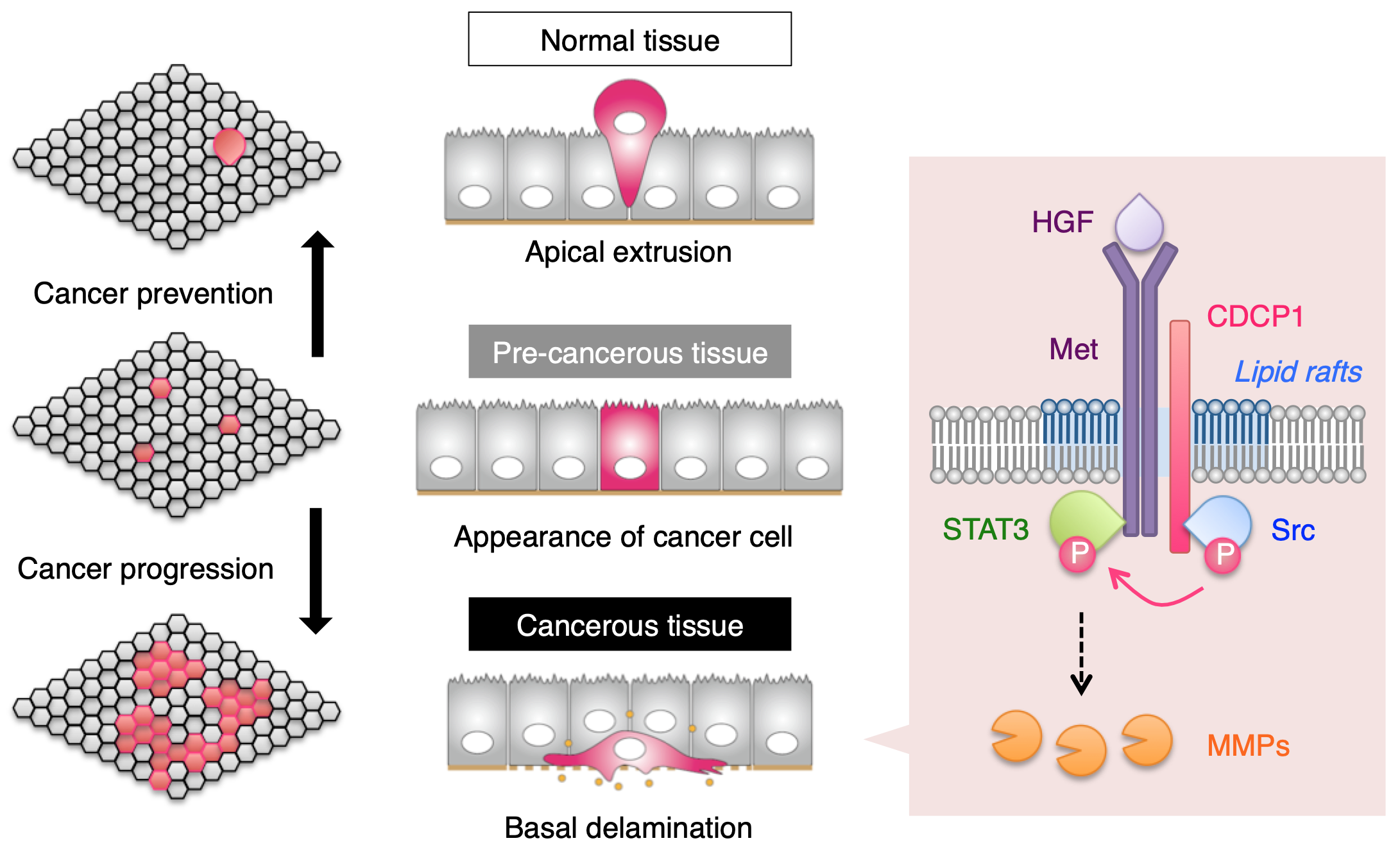Src activation in lipid rafts confers epithelial cells with invasive potential to escape from apical extrusion during cell competition (Okada Lab, in Current Biology)
Abnormal/cancerous cells within healthy epithelial tissues undergo apical extrusion to protect against carcinogenesis, while they acquire invasive capacity once carcinogenesis progresses. However, the molecular mechanisms by which cancer cells escape from apical extrusion and invade surrounding tissues remain elusive. In this study, we demonstrate a molecular mechanism for cell fate switching during epithelial cell competition. We found that during competition within epithelial cell layers, Src transformation promotes maturation of focal adhesions and degradation of extracellular matrix. Src-transformed cells underwent basal delamination by Src activation within sphingolipid/cholesterol-enriched membrane microdomains/lipid rafts (Figure), whereas they were apically extruded when Src was outside of lipid rafts. A comparative analysis of contrasting phenotypes revealed that activation of the Src-STAT3-MMP axis through lipid rafts was required for basal delamination. CUB domain-containing protein 1 (CDCP1) was identified as an Src activating scaffold and as a Met regulator in lipid rafts, and its overexpression induced basal delamination. In renal cancer models, CDCP1 promoted epithelial-mesenchymal transition-mediated invasive behavior by activating the Src-STAT3-MMP axis through Met activation. Overall, these results suggest that spatial activation of Src signaling in lipid rafts confers resistance to apical extrusion and invasive potential on epithelial cells to promote carcinogenesis.
This article was published in Current Biology on July 9, 2022.
Title: “Src activation in lipid rafts confers epithelial cells with invasive potential to escape from apical extrusion during cell competition”
Author: Kentaro Kajiwara, Ping-Kuan Chen, Yuichi Abe, Satoru Okuda, Shunsuke Kon, Jun Adachi, Takeshi Tomonaga, Yasuyuki Fujita, Masato Okada
Links
- Home
- Achievement
- Research Activities
- Src activation in lipid rafts confers epithelial cells with invasive potential to escape from apical extrusion during cell competition (Okada Lab, in Current Biology)








